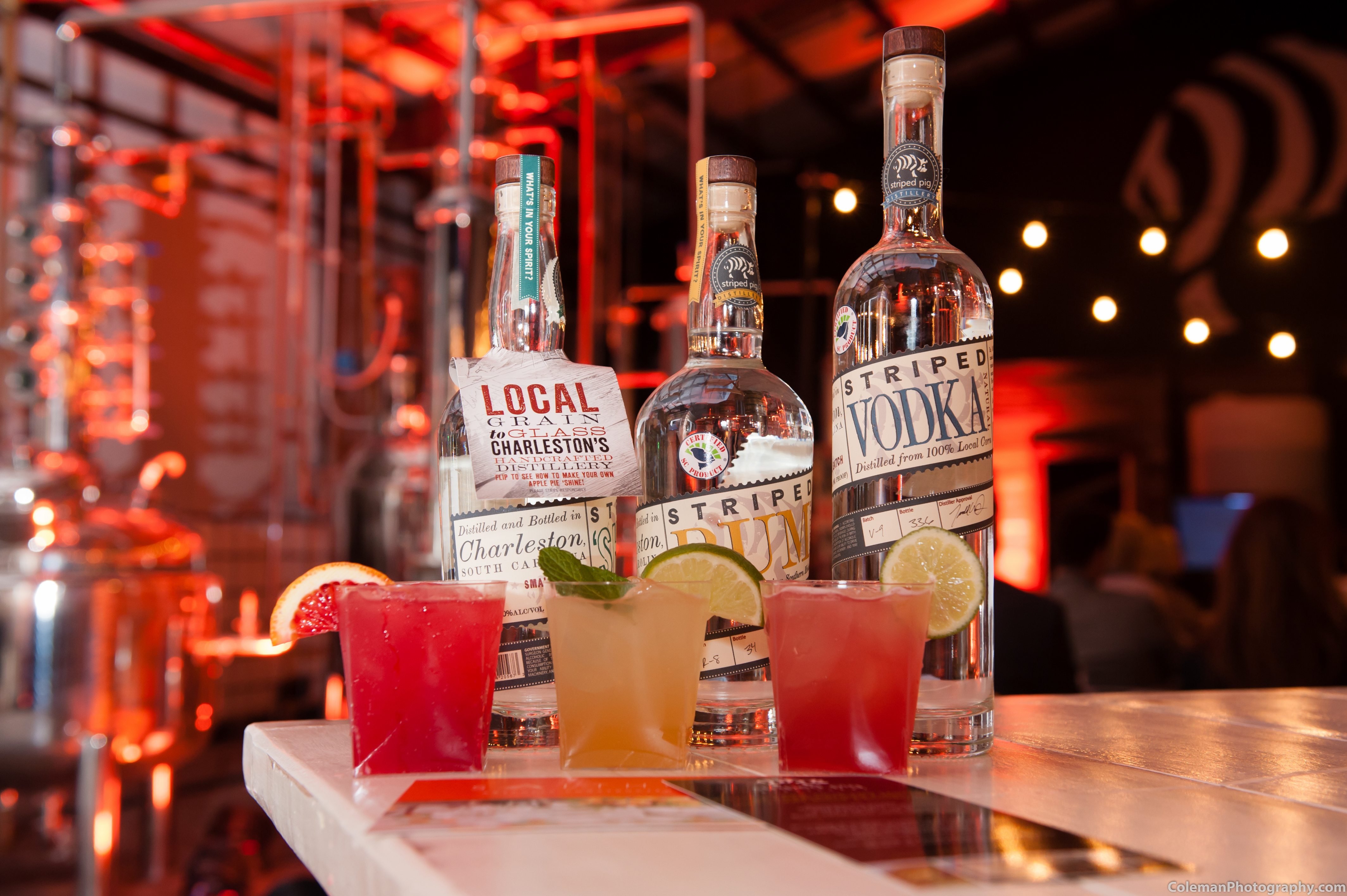 There is an old and familiar smell wafting through the winter breezes all across the South, the distinctive aroma of grain cooking in copper kettles. I remember well the first time I noticed this unique odor; I was ten years old and sitting in a duck blind on an island in the Mississippi River. The wind had shifted to the north, as a cold front sent thousands of ducks downriver. The wind also carried the pungent smell of cooking grain. When I asked my grandfather what the smell was, he replied,
There is an old and familiar smell wafting through the winter breezes all across the South, the distinctive aroma of grain cooking in copper kettles. I remember well the first time I noticed this unique odor; I was ten years old and sitting in a duck blind on an island in the Mississippi River. The wind had shifted to the north, as a cold front sent thousands of ducks downriver. The wind also carried the pungent smell of cooking grain. When I asked my grandfather what the smell was, he replied,
“Oh, that’s just Perry Nation running off a batch of his whiskey.”
It seemed our island was home to the Mississippi Delta’s premium whiskey maker. According to my grandfather, Perry Nation made the best sour mash whiskey money could buy, and later that morning, we visited the site of Nation’s still, where he filled my grandfather’s two-and-a-half gallon keg with another year’s worth of his 10 year old masterpiece.
 In the years since, I’ve heard more than one Delta farmer bemoan the fact that a man couldn’t buy a decent bottle of good hand-made whiskey for love nor money. Well, not to worry, there is help on the horizon. All across the South there is a renaissance of the hand crafting of spirits, and we ain’t talking about moonshine. We’re talking whiskies of outstanding quality and craftsmanship. I recently visited one of these pioneer craft distillers, The Striped Pig Distillery, in Charleston, South Carolina.
In the years since, I’ve heard more than one Delta farmer bemoan the fact that a man couldn’t buy a decent bottle of good hand-made whiskey for love nor money. Well, not to worry, there is help on the horizon. All across the South there is a renaissance of the hand crafting of spirits, and we ain’t talking about moonshine. We’re talking whiskies of outstanding quality and craftsmanship. I recently visited one of these pioneer craft distillers, The Striped Pig Distillery, in Charleston, South Carolina.
Before I begin to tell y’all about The Striped Pig Distillery and how they make spirits, let me first tell you what they aren’t. They are not blenders, bottlers, or brokers. They do not buy bulk spirits, then blend and flavor them before bottling. They actually make their products on site, and from scratch, using their own recipes and ingredients. While I’m sure there are other distilleries that hand select the grains that are used to make their products, Striped Pig goes much further back into the process.
The seeds grown to provide the grain are hand-picked and hand germinated by the distillery. These seeds are then planted in the soil at Myer’s Farm in Bowman, South Carolina. Each of the varieties of corn, rye and wheat is carefully selected by the distillery, and then grown under close supervision until harvesting. This extra attention to securing the right raw material assures consistent and high quality end products.
 After harvesting, the grains are custom milled on site, assuring the proper texture and sugar content needed for the custom cooking that forms the mash. The mash is the heart of the distiller’s art, and will determine not only the alcohol content of the finished product, but the smoothness and flavor. Bad mash means bad booze.
After harvesting, the grains are custom milled on site, assuring the proper texture and sugar content needed for the custom cooking that forms the mash. The mash is the heart of the distiller’s art, and will determine not only the alcohol content of the finished product, but the smoothness and flavor. Bad mash means bad booze.
The next step is fermentation, and Striped Pig opts to use small batch fermentation for each of its products. Carefully selected strains of yeast assure that the proper flavor profiles will be achieved on a continuing basis. After fermentation, the distilling process begins, and Striped Pig uses both pot and column stills, thus allowing for clear spirits, rum, and whiskey to be distilled individually. The clear products, such as white rum, vodka, and moonshine, are allowed to rest before bottling. The brown rum and whiskey is sent to be aged in barrels.
 When the aging process is complete, the spirits are then bottled and sealed on site and by hand. Each bottle is labeled with batch and bottle number written on the label by hand. Then and only then, the distiller hand signs each bottle, certifying that it has met the Striped Pig standards, from seed to finished product. It is hard to imagine a commercially available product that has been made with more care and attention to detail, but how does it actually taste?
When the aging process is complete, the spirits are then bottled and sealed on site and by hand. Each bottle is labeled with batch and bottle number written on the label by hand. Then and only then, the distiller hand signs each bottle, certifying that it has met the Striped Pig standards, from seed to finished product. It is hard to imagine a commercially available product that has been made with more care and attention to detail, but how does it actually taste?
Since I have a serious allergic reaction to alcohol—I tend to want to get in my car and drive to New Orleans—I always invite my friend Paddy O’Donovan to accompany me when I visit a distillery or a brewery.  Paddy is a life-long student of the distiller’s art, as well as an enthusiastic connoisseur of the finished product. Paddy has never met a whiskey he didn’t like; he just likes some more than others. When we finished our tour of the Striped Pig, he eagerly headed to the tasting room.
Paddy is a life-long student of the distiller’s art, as well as an enthusiastic connoisseur of the finished product. Paddy has never met a whiskey he didn’t like; he just likes some more than others. When we finished our tour of the Striped Pig, he eagerly headed to the tasting room.
We were offered samples of all of the Pig’s products, but we chose to concentrate on the whiskey. No doubt, there are quality differentiations in vodka and moonshine, but good whiskey is the standard of the distiller’s art, and Paddy had tasted hundreds of varieties of this golden gift to mankind. All of our attention would be devoted to the Pig’s whiskey.
When we reached the tasting bar, Paddy opened the small carrying case hung over his shoulder and removed his prized whiskey tasting glass. It was a small modified snifter, with a smaller bowl and an elongated neck. He carefully laid it out on a linen napkin, along with a small pane of clear glass. The Pig supplied me with a very similar glass. I would participate in all phases of the tasting, save the final sip. We were ready to begin.
Paddy allowed a half inch of whiskey to be poured into his glass, and immediately placed the glass pane over the top. When I asked why, he replied that the glass prevented the highly volatile congeners from dissipating in to the air. He went on to explain that congeners were the other substances produced during fermentation, and were responsible for the subtle flavors and aromas unique to each batch of whiskey. Lose the congeners and you lose the whiskey. I quickly placed a cardboard coaster over my glass.
While our samples sat quietly with their congeners intact, Paddy began to study the appearance of the whiskey.  After much brow wrinkling and head shaking, he pronounced that our samples were of medium color, much like the sunlight falling on amber. Satisfied that the whiskey met his standards of appearance, we moved on to the next step, examining the “nose.”
After much brow wrinkling and head shaking, he pronounced that our samples were of medium color, much like the sunlight falling on amber. Satisfied that the whiskey met his standards of appearance, we moved on to the next step, examining the “nose.”
Paddy removed the pane of glass, and holding the snifter by its stem, began to gently rotate the liquid against the bulb of the glass. According to Paddy, this released the undamaged congeners into the atmosphere, and the chimney shape of the snifter brought them straight to your nose. I followed his instructions, and I have to admit, I was amazed at the result. My senses picked up a cacophony of subtle aromas, which swirled and blended into a single sensory experience. My nose was filled with the essence of memories of fields of harvested grain, with just the hint of wood smoke and fruitcake. When I commented on the sensations, Paddy explained.
“Your nose is much more sensitive than your sense of taste. You taste whiskey only to confirm what your nose has already told you,” and with that, he gave his glass another swirl and then sipped the liquid, letting it slide across his tongue and filter throughout his mouth. After a careful analysis of the whiskey, Paddy turned to me and pronounced,
“That, Sir, is a superior example of the distiller’s art, and a mighty fine whiskey.”
Paddy began to wipe the inside of his tasting glass with the linen napkin, much as a priest does after communion. When satisfied that it was clean, he replaced it in the carrying case, slung it over his shoulder and said,
 “Our work here is done. Let’s go to get some shrimp and grits.”
“Our work here is done. Let’s go to get some shrimp and grits.”
The Striped Pig Distillery has achieved its goal. After immense attention to detail and procedure, the distillery has produced a first rate whiskey that can take its place at the forefront of American distilling—quite an achievement. The Striped Pig Distillery is a Southern operation that’s delivering a world class result.
Additional information on The Striped Pig Distillery can be found by visiting their website: www.stripedpigdistillery.com, or by contacting Juliana Harless at: 843-276-3201. It’s worth a visit for anyone who’s in the vicinity of Charleston.
All Photos Courtesy of The Striped Pig Distillery.



FINE article!!!!
Yancey, Thanks for the kind words. The Pig is definitely a labor of love and they really try to make the best spirits possible.
If you got any free samples as a consequence of preparing this article Tommy, feel free to FedX ’em in this direction. I know you don’t partake and want to do what I can to help.
To start with, you can’t FedEx booze, so I couldn’t even if I had samples. The Pig is very generous, and if you find yourself in Charleston, stop by.
This article makes me want to order a couple of bottles of Striped Pig whiskey for me and my good friend Don Carpenter. I’d like to polish up a couple of glass snifters, pour in a finger or two of SPW and watch it catch the light – trapping and releasing those congeners at will.… I appreciate your sensory tie to you boyhood duck blind days, and your grandfather’s vernacular in idenifying the unique and unfamiliar scent trailing down from the north with the birds. I also delighted in your participation of the experience – right up until the “forbidden swallow”. Somehow, the fact that you did not participate in the final taste – heightened all of the olifactory senses of the entire experience. Amazing how that works… Great article.